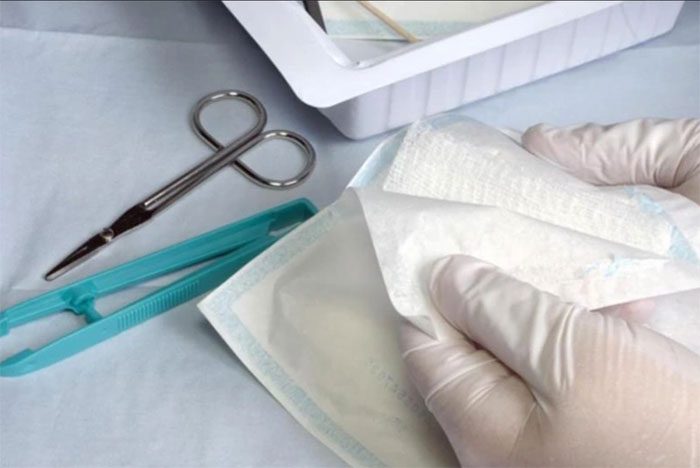Using scales from freshwater carp species native to Vietnam, Dr. Nguyễn Thúy Chinh has successfully researched a method to extract “clean” collagen, which has been effectively tested for wound healing.
In addition to its beauty benefits, collagen has long been widely used in biomedical applications, such as wound dressing materials. However, most popular products on the market today are derived from mammals like pigs, cows, and sheep, which have limited clinical applications and pose concerns regarding the risk of zoonotic diseases.

Collagen wound dressing helps speed up healing. (Illustrative image).
In light of this situation, Dr. Nguyễn Thúy Chinh and her colleagues at the Tropical Engineering Institute (Vietnam Academy of Science and Technology) have successfully researched the extraction of collagen from freshwater fish scales, which has been tested successfully for wound healing in rats.
“Fish scales provide a relatively abundant source of collagen and address most of the issues faced by collagen derived from mammals,” Dr. Nguyễn Thúy Chinh stated. During processing, fish scales are often considered waste products from local markets or processing plants. With an annual production of tilapia in Vietnam around 50,000 tons (accounting for 2.2% of total aquaculture output) and hundreds of thousands of tons of various carp species, this research not only utilizes waste but also minimizes environmental pollution while yielding high-quality collagen for biomedical applications.
The distinction of this research project is that scientists used scales from freshwater carp species native to Vietnam, rather than from saltwater or brackish water fish as in previous studies. The biodiversity of each region affects the growth of freshwater fish in different ways, and varying temperatures also lead to differences in the composition and structure of fish scales.

Close-up of the 3D printing process of collagen membranes from fish scales as hemostatic materials. (Photo: Provided).
The research team indicated that the process of treating fish scales to extract collagen is conducted in a temperature-controlled tank maintained at 4 degrees Celsius. The extracted collagen has a fibrous structure, with fiber diameters ranging from 0.5 to 1 micrometer, and collagen fibers concentrated into bundles measuring 2.5 to 4 micrometers.
From the extracted collagen, the research team blended it with ginsenoside Rb1—a chemical compound found in the Panax plant, known for its anti-inflammatory and anti-allergic properties—and polyphenols from golden tea, then loaded it into a syringe of a 3D printer to create a membrane product that can be applied to wounds.
Tests on large gluteal wounds in rats were conducted at the Military Medical Academy, and the results showed a significant efficacy of collagen derived from fish scales. The average time to achieve hemostasis with the biological material membrane was 104 ± 16.7 seconds, which is lower than using conventional gauze for hemostasis (p
The results above are preliminary findings that Dr. Nguyễn Thúy Chinh and her colleagues are considering for future research. One area of interest for her is the potential of this product not only for external wounds but also for internal injuries.


















































